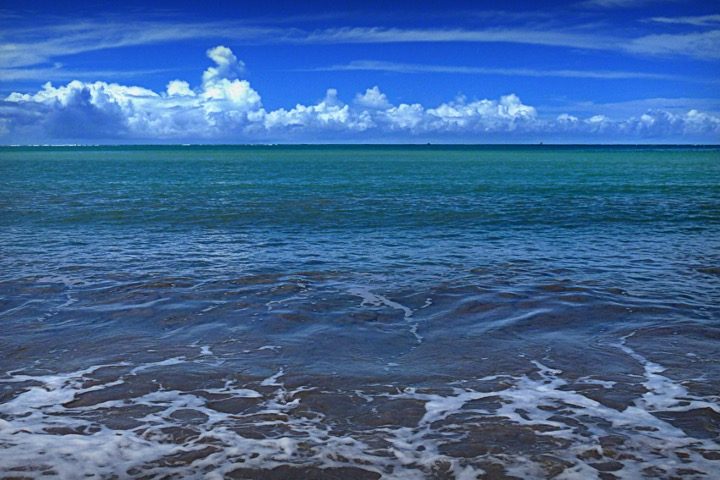
In a very “hush-hush” manner, scientists from the University of Washington traveled to California’s Bay Area to test yet another risky geoengineering strategy that is intended to cool the Earth from the supposedly man-made scourge of global warming, which has morphed into the catch-all term “climate change.”
Marine Cloud Brightening is a controversial albedo — or reflected light — modification technique that looks to increase the reflectivity of clouds and redirect some sunlight back into space as a means of cooling the planet. The University of Washington team who performed the experiment acted, as The Smithsonian put it, in a “semi-clandestine fashion,” in order to avoid potential backlash from citizens who don’t like the idea of scientists messing with their sunlight.
The scientists were allowed to use a decommissioned aircraft carrier — the USS Hornet, which currently serves as a museum in Alameda — where they used a high-powered machine to shoot microscopic salt aerosol particles, effectively salt water, into the air in an attempt to see how the particles traveled in the air. In the future, the scientists hope to attempt to actually reflect the sun’s light.
“If you increase the number of cloud droplets by increasing the number of sea salt particles, it’s like increasing the number of mirrors to reflect sunlight back to space,” said project leader Rob Wood.
It’s only the second time that cloud brightening has been attempted. Researchers in Australia tested the concept in 2020 to see if it could be used to stall bleaching of the Great Barrier Reef.
Even climate zealots are wary of this type of geoengineering.
“You could well be changing climatic patterns, not just over the sea, but over land as well,” Greenpeace senior scientist David Santillo told The New York Times. “This is a scary vision of the future that we should try and avoid at all costs.”
“Geoengineering all together is a pretty controversial issue,” said Elena Givental, an environmental studies professor at Cal State East Bay. “While there are certain benefits to trying to cool the environment, we are not quite sure what kind of negative effects or feedback can keep going on.”
According to the Times, the Biden administration does fund some research into marine cloud brightening, but claims to have nothing to do with this particular project.
“The U.S. government is not involved in the Solar Radiation Modification (SRM) experiment taking place in Alameda, CA, or anywhere else,” a White House spokesman said.
Even project participants concede that using such geoengineering would probably not be the best thing for mankind.
“I hope, and I think all my colleagues hope, that we never use these things, that we never have to,” Marine Cloud Brightening Project manager Sarah Doherty told the Times.
Still, Doherty believes that we must investigate methods of cooling the planet.
“We are kind of locked in at this point committed to significant climate disruption,” she said. “So the question is, are there other things we can do to help reduce suffering and impacts? And this might be one of them.”
Climate realists have mocked the bizarre geoengineering project, with The Heartland Institute including it on a segment they call “Crazy Climate News of the Week.”
“I remember a time, not that long ago, when environmentalists constantly said we shouldn’t be messing with nature … let nature take its course,” said Dr. H. Sterling Burnett on The Climate Realism Show on Friday. “Yet here we are actively intervening in nature to bring about … cooling.”
Cooling “is known throughout history to cause more death and destruction and crop failures,” Burnett reminded viewers.
“This is just another idiotic attempt for the government … to claim they’re controlling the climate,” Burnett concluded. “Failure, actually, would be the best option here because if they succeed the world would become a darker place, a place where crops are less likely to grow.”
And, of course, a colder place.




